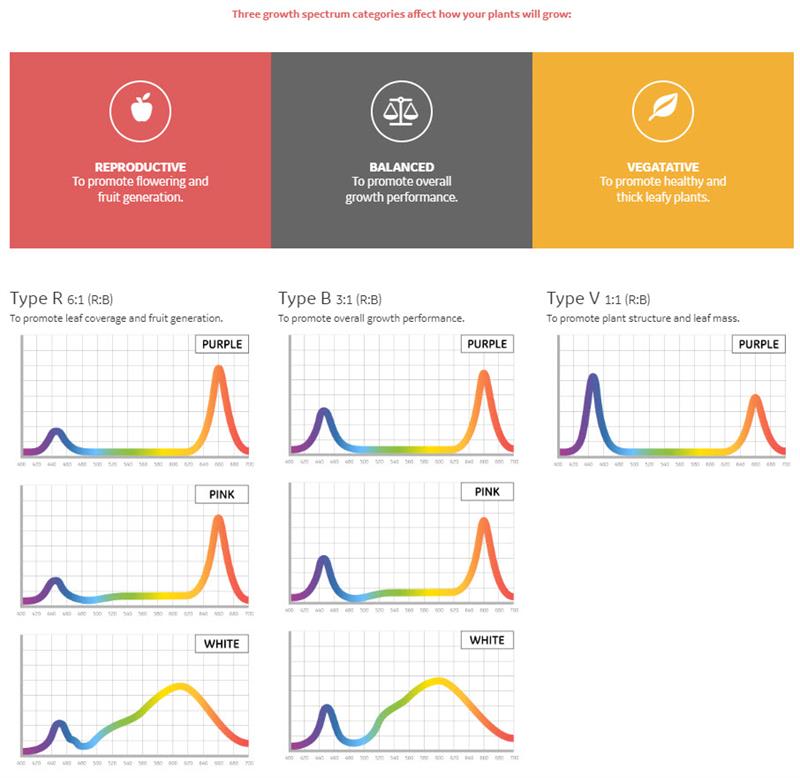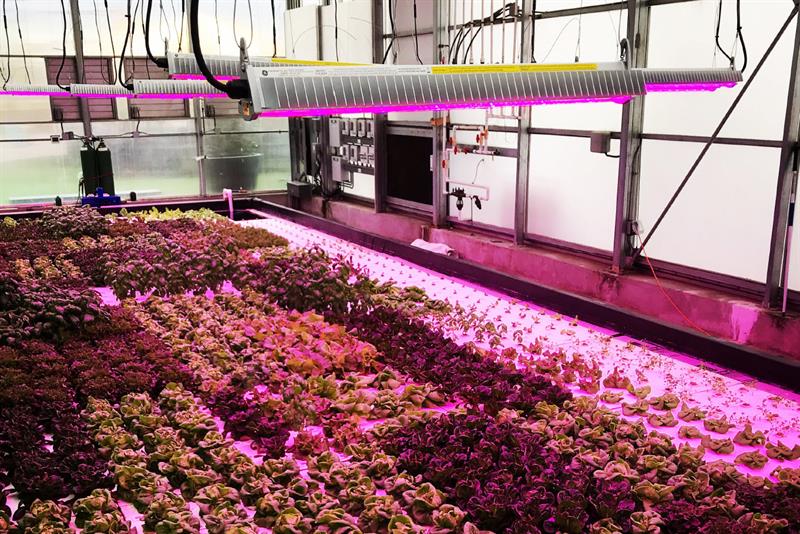While it may be true that the costs of developing new facilities will increase the cost of production, the reduction in the costs associated with transporting produce to an end market, both economically and environmentally, more than offset this.
In the UK, for example, Ocado is investing £17m in a high-tech vertical farm which is to run alongside its robot-run distribution centres, and the company said that it plans to roll this concept out around the world.
The vertical farm, Jones Food, currently grows around 420 tonnes of basil, parsley and coriander a year in stacked trays using LED lights to encourage growth.
Ocado will be looking to use its experience and expertise in robotics and AI to help make the Jones Food operation more efficient.
According to senior management at Ocado, the company is also forming a joint venture – Infinite Acres – with a US-based vertical farming business 80 Acres and Priva, a Dutch horticultural technology provider. 80 Acres currently grows tomatoes and courgettes as well as leafy salads and herbs, without using pesticides.
The concept of vertical or urban farming is becoming more popular and at its heart it looks to help retailers to better address fundamental consumer concerns such as seasonal availability, freshness and sustainability.
Unlike traditional farms, urban farms look to control every aspect of a plant’s growth - but that can prove very expensive to enable.
“When we talk about urban farming it’s about getting the farm closer to the end market. Today, much of what we think of as fresh has had to travel miles before getting to a store,” explains Bruno D’Amico, Design and Product Manager at Current, part of GE. He continues, “It means that by the time you eat it, it could be months old. Take apples or onions, for example, these are products that if stored correctly can have a very long storage life.
“The idea of being fresh depends on where it was sourced. The urban farm is about how you can get the farm nearer to urban centres and produce food locally.
“New technologies are helping to revolutionise the way in which we can access fresh produce,” D’Amico suggests.
Industrial scale food production
Current offers horticultural LED lighting systems that have been designed to maximise the potential of urban farms and to support industrial scale levels of food production.
“We provide data to help better understand what is happening in the local environment. So, we’ll look at occupancy rates and temperature, for example, and that data is then made available to the customer to better support the specific outcome they’re looking for.”
Light is obviously one of the most crucial elements when it comes to plant growth, yet while the sun’s light spans a broad spectrum – from UV through to infrared wavelengths – the available light spectrum can be affected by things like geography, the weather and the changing seasons.
“Different plants have different light needs and today it is possible to vary the light ‘recipe’ to some extent, enabling greater control over how plants grow,” explains D’Amico. “However, when you talk about urban farms a lot will depend on the buildings and facilities that are used.
“These farms can be located in a warehouse or in a tower block. If you look at a lot of entry level farms, many have started in an apartment before moving to a larger space.
“If you look beyond these kind of ‘start-ups’, increasing numbers of serious investors are looking for an optimum growing space and will consider building suitable facilities – all of which will require the collection of environmental data.”
Whatever the facility lighting, while vital, is just one of the things that need to be considered. Air flow will be crucial along with water circulation and applying the right amount of nutrients.
“Air flow management is critical, especially in vertical farms,” D’Amico explains. “There are certainly some basics that need to be addressed, but a lot will depend on where you are growing and the type of building that you are using – it means that a lot will need to be managed.”
The use of LEDs and their ability to process light generation, extraction and re-absorbance and the fact that they can run indefinitely, means that they can offer farmers much greater control over their crops - whether that is to promote leaf coverage, fruit generation, plant or leaf mass.

“Light can also prove critical when it comes to the management of pests, bacteria and fungal pathogens and can be used to create ‘traps’ that prevent threats spreading across crops,” explains D’Amico.
According to D’Amico, the urban farm sector is benefitting from two big trends – a growing urban population and worries about the environment.
“We are seeing large investors looking at issues around the environmental impact of farming and whether it is sustainable, and how technology can then be used to address these problems at the top level.
“When it comes to urban farming we are seeing the development of both mega urban farms, with large buildings and a large footprint, as well as strong growth in much smaller farms too. These farms look to support local grocery stores and restaurants, for example. It’s hard to say which is gaining the most traction, but both are growing.”
Lighting solutions
Current is involved with a number of projects that are using its lighting solutions, but it is also supporting job training and education in a bid to help develop more local food systems and a greener approach to farming.
Current has installed 12km of its Arize LED solution in a new facility owned by Jones Food, which is now working closely with Ocado. The equipment is housed in a state of the art facility which has been designed to enable crops to be grown in isolation away from external contamination.
“Lighting is the life blood of the facility,” said the company’s CEO James Lloyd-Jones, “and Current was able to provide the right lighting set up and spectrum.”
“We’ve developed Arize Lynck LED Growlights that by isolating and combining different light wavelengths are able to replicate and accelerate natural photosynthesis and thereby reduce growth cycles,” explains D’Amico.
“Plants are sensitive to blue and red light spectrums and by varying those spectrums – we can offer seven variations – we are able to encourage different growth patterns.
“We approach our customers with a spectrum, look to understand the outcome they are looking for and work with them to give them the right light to support their needs.
“We don’t just focus on the lighting perspective but try to better understand the entire environment.”
According to D’Amico the benefits of the LEDs come in the form of ease of installation, a reduction in operational costs and much greater levels of reliability.
But the issue, D’Amico suggests, is not only about sourcing fresh food locally, but also providing access to food where accessibility can be a real problem.

“Can an urban farm be relocated to remote areas to source food locally food?
“A good example of this is how our LED lighting solution has been used by the Big Tex Urban Farm to grow crops. Partly an innovation lab as well as a production facility, it has used our LED solutions to grow food for isolated desert communities.”
The farm originally comprised of just 100 raised garden boxes but after significant investment Big Tex was able to produce 11,000 pounds of food in 2018, which translates into 140,000 servings, using the Arize LED lighting system to provide optimal light spectrums to drive plant growth.
The red spectrum encourages flowering and fruit generation, while the blue produces much thicker leaves. A combined red-to-blue mix has helped to encourage much greater overall growth.
“Critically, these LEDs have been able to produce better crops, quicker. But they are longer life, require less maintenance and less heat than more traditional forms of lighting,” says D’Amico.
Urban agriculture can happen anywhere and the technology being used is making it more viable economically, providing an incredible opportunity for growers everywhere.













